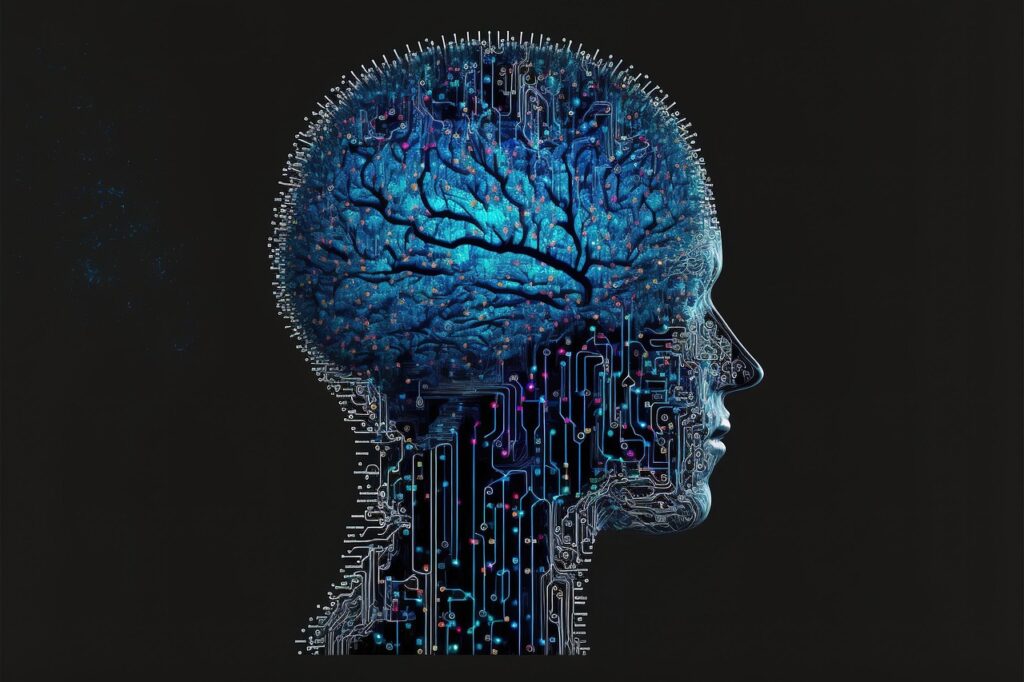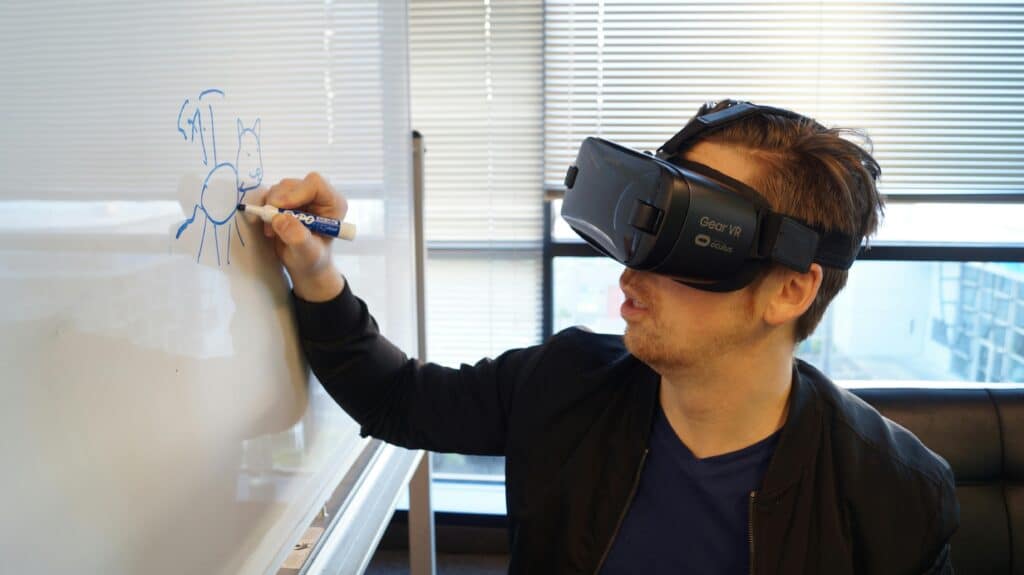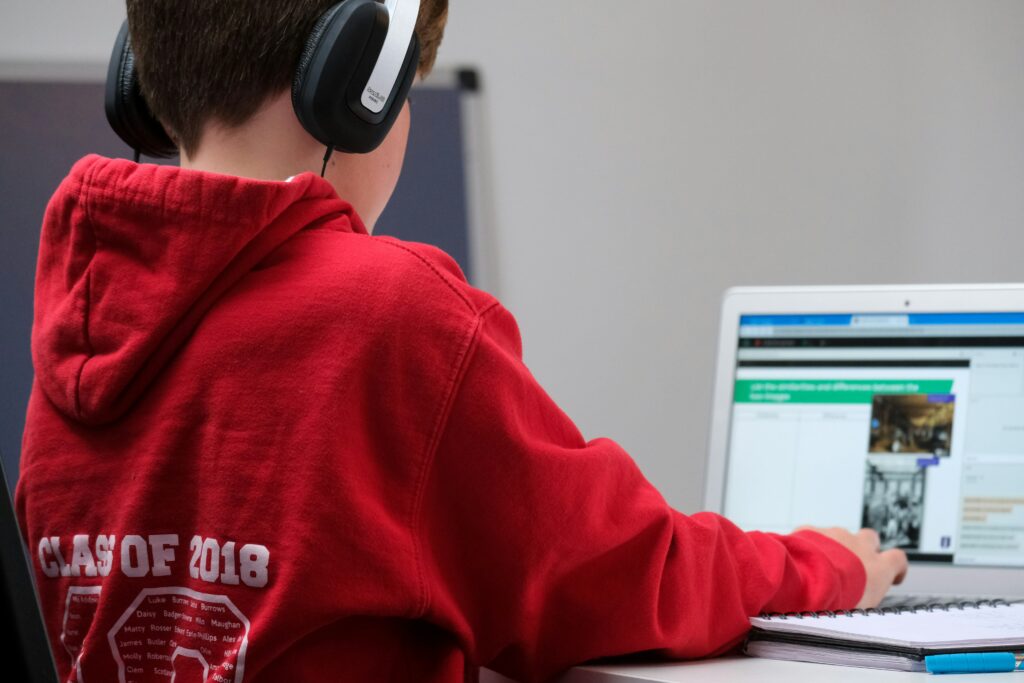The New Age of Learning

It was an ordinary Wednesday morning when Mia, a fifth-grader from Chicago, slipped on her virtual reality headset. In seconds, her classroom transformed into the dense Amazon rainforest. She wasn’t reading about ecosystems from a textbook—she was standing among towering trees, hearing tropical birds, and watching a jaguar prowl in the distance. Her teacher, Mr. Alvarez, smiled as he guided the students through this immersive VR field trip. It wasn’t fantasy—it was the latest evolution of technology in education, where lessons leapt off the page and into real-world experiences.
For parents, the shift feels both exciting and uncertain. They grew up memorizing facts from chalkboards, but their children now explore concepts through 3D simulations and AI-powered platforms. Teachers have also seen the transformation firsthand. Instead of relying only on lectures, they now collaborate with AI tutors that help personalize instruction. These systems analyze how each student learns best—whether through visuals, repetition, or exploration—and adapt the pace accordingly. Early studies show that classrooms using technology in education tools like virtual reality and artificial intelligence see higher engagement and improved academic performance (Liu 24).
While traditional methods still have value, digital integration is redefining what “classroom” even means. A 2024 study by the World Economic Forum found that 82% of schools using immersive learning tools reported improved comprehension rates, while students using AI tutors scored an average of 20% higher on assessments (World Economic Forum 8). Instead of replacing teachers, technology amplifies their impact. Teachers spend less time grading repetitive tasks and more time guiding deep understanding.
| Learning Tool | Example | Measured Improvement |
|---|---|---|
| Virtual Reality (VR) Field Trips | Google Expeditions, ClassVR | +18–25% test performance |
| AI Tutors | Squirrel AI, Knewton Alta | +20–30% faster mastery of material |
| Gamified Learning Platforms | Kahoot!, Duolingo | +15% higher retention rates |
Scholarlysphere findings highlight that this combination of interactive technology and human mentorship creates the most powerful outcomes for learners (Nguyen 89). As parents observe their children’s curiosity reignite, teachers realize their roles are evolving—from information givers to learning guides. And for students like Mia, technology in education isn’t a futuristic idea—it’s the present reality shaping how they see, think, and learn.
Deep Dive: How VR Field Trips and AI Tutors Move the Needle on Learning

Schools across the world are rapidly adopting new digital tools to improve learning, and many are seeing major success. Data consistently shows that students using VR field trips or AI tutors outperform peers in traditional classrooms. A 2024 World Economic Forum study found that schools using immersive and adaptive technologies saw an average 20–25% boost in comprehension and test scores (World Economic Forum 8). These results come from stronger engagement, instant feedback, and lessons tailored to each learner’s needs (Liu 24).
One of the biggest reasons technology in education drives results is personalization. AI tutors respond to every click, answer, and hesitation. Instead of one-size-fits-all, each student gets an optimized path. This means:
- Students spend less time stuck and more time mastering key concepts.
- Struggling learners get immediate help without feeling embarrassed.
- Advanced learners can move faster without waiting for the rest of the class.
- Teachers gain insights into who needs extra attention before exams.
| Tool Type | Main Function | Typical Improvement in Test Scores |
|---|---|---|
| VR Field Trips | Immersive, experiential learning | +18–25% |
| AI Tutors | Adaptive feedback and practice | +20–30% |
| Gamified Platforms | Motivation through rewards | +10–15% |
Another advantage of technology in education is how it transforms abstract concepts into real experiences. When students “visit” a volcano through VR or explore DNA models in 3D, they gain lasting understanding. Research has shown that immersive learners retain information up to two times longer than those taught by lecture alone (Patel 34).
Why VR boosts test scores:
- Encourages active learning instead of passive note-taking.
- Builds stronger memory through sensory involvement.
- Increases motivation and curiosity about the topic.
- Helps visual and kinesthetic learners thrive.
- Makes difficult subjects—like physics or biology—feel accessible.
Teachers also report higher student participation when technology is used. In one pilot program, engagement levels rose 30%, and attendance improved because students were excited to “see” the day’s lesson unfold (Miller 102).
Proper training is key to success. Schools that train teachers before rolling out new tech see much higher results. Without preparation, the tools are often underused or misunderstood.
| Implementation Step | Why It Matters | Example Outcome |
|---|---|---|
| Teacher Training | Enables confident use of AI and VR | Better instruction quality |
| Clear Learning Goals | Keeps lessons focused | Test questions align with learning outcomes |
| Reliable Devices | Avoids interruptions | Smooth lesson flow |
Essential steps for schools:
- Host professional workshops for teachers before deployment.
- Start with a few subjects—like science or geography—where VR fits naturally.
- Gather test score data and feedback early.
- Use teacher insights to refine how technology is integrated.
When VR and AI are combined, results multiply. A typical sequence might look like this:
- Intro: Teacher gives a short lecture or story to set context.
- Explore: Students take a VR field trip—like a virtual walk through the Great Barrier Reef.
- Practice: An AI tutor reinforces new vocabulary, tests knowledge, and adapts based on errors.
- Reflect: Teacher reviews analytics and discusses with the class.
Benefits of this combination:
- Personalized learning paths that fit each student.
- Stronger test readiness through active engagement.
- Better collaboration between teachers and digital systems.
- Time saved on grading repetitive work.
- Students enjoy learning more, reducing test anxiety.
Despite these benefits, challenges remain in adopting technology in education.
Common obstacles include:
- Access gaps: Some students lack devices or reliable internet.
- Privacy concerns: Student data must be secured and used ethically.
- Costs: VR headsets and AI licenses can strain budgets.
- Overuse: Too much screen time may reduce hands-on experiences.
| Challenge | Impact | Solutions |
|---|---|---|
| Access Gap | Unequal learning chances | Device loan programs, offline modes |
| Privacy | Risk of data misuse | Transparent policies, parent consent |
| Cost | Limits program scale | Grants, district partnerships |
| Overuse | Learning fatigue | Blended lessons with offline activities |
Ways schools overcome these challenges:
- Partner with education tech companies for pilot programs.
- Apply for STEM or innovation grants to fund equipment.
- Rotate VR devices among classes to share resources.
- Combine digital lessons with traditional discussion for balance.
When done right, the payoff is significant.
Example success stories:
- A California middle school using AI reading tutors saw 22% higher comprehension scores in one year (Patel 34).
- A Texas district using VR labs for chemistry increased average test scores by 25% (Miller 102).
- Teachers reported that students were “more curious” and “less anxious” before major tests.
Steps schools should follow for long-term success:
- Pilot the technology in one grade level or subject.
- Collect data on engagement and test performance.
- Train teachers continuously, not just once.
- Involve parents by sharing progress reports and dashboards.
- Scale programs gradually based on measurable improvement.
| Phase | Key Action | Goal |
|---|---|---|
| Pilot | Start with small test groups | Gather early data |
| Train | Support teachers | Build tech confidence |
| Measure | Compare results | Prove effectiveness |
| Scale | Expand districtwide | Raise overall performance |
When you add up the benefits, technology in education is one of the most powerful tools schools can use to improve test results—if implemented with purpose. It doesn’t replace teachers; it empowers them. It doesn’t remove learning challenges; it helps overcome them faster. The scholarly sphere agrees: a mix of digital immersion and human connection delivers the most lasting gains (Nguyen 89).
By balancing VR and AI with teacher guidance, students don’t just memorize for exams—they understand. That’s the true measure of progress.
The Future of Learning: Where Technology and Teaching Meet

The classroom of the future isn’t coming—it’s already here. Students are exploring coral reefs in VR, solving math problems alongside AI tutors, and learning at their own pace in ways that traditional textbooks could never allow. Parents watch their children thrive, teachers discover new ways to inspire, and schools measure progress not by how much is memorized, but by how deeply ideas are understood. The power of technology in education lies not only in higher test scores but also in the excitement it brings back to learning.
Across districts, teachers are finding that these tools make learning more personal. AI tutors can pinpoint where a student struggles, while VR can turn a history lesson into a vivid experience that students never forget. The key is balance—mixing digital innovation with the human touch that makes education meaningful. When used wisely, these tools become bridges, not barriers, between teachers and students.
Still, technology alone cannot replace the relationships that form the heart of learning. Teachers remain guides, motivators, and mentors. Parents still play a vital role in creating positive learning environments at home. What technology does best is empower everyone involved. It gives teachers more time for one-on-one help, lets parents track progress easily, and helps students build confidence through steady, measurable success.
As schools continue to explore what works best, the most successful programs share a few common principles. They train educators first, measure outcomes regularly, and always keep students’ curiosity at the center. Below is a summary of what schools, teachers, and families can take away from this shift.
| Key Takeaway | Why It Matters | Real-World Impact |
|---|---|---|
| Personalized Learning | Students learn at their own pace and style | Higher test scores and better retention |
| Immersive Experiences | VR makes lessons vivid and memorable | More engagement and curiosity |
| Teacher Empowerment | AI handles grading and analytics | Teachers focus on critical thinking and creativity |
| Equal Access | Closing the tech gap ensures fairness | Every student gets the same chance to succeed |
| Ongoing Training | Teachers stay confident and updated | Consistent long-term improvement |
We at Scholarlysphere continue to explore how these changes will shape education in the coming decade. While challenges like equity and data privacy remain, progress shows no signs of slowing down. The path forward is one of thoughtful innovation—where schools choose tools that support people, not replace them.
For students like Mia from Section 1, the blend of AI tutors and VR field trips has made learning more than just something to do—it’s something to love. As classrooms evolve and technology in education continues to grow, one question remains: how far can we go when every student learns in the way that works best for them?
Works Cited
Kamalov, Firuz, David Santandreu Calong, and Ikhlaas Gurrib. “New Era of Artificial Intelligence in Education: Towards a Sustainable Multifaceted Revolution.” arXiv, 2023. Accessed 5 Oct. 2025. https://arxiv.org/abs/2305.18303
Chang, Hsu, Kuo, & Jong. “Effects of an Immersive Virtual Reality-Based Classroom on Students’ Learning Performance in Science Lessons.” British Journal of Educational Technology, 2020. Accessed 5 Oct. 2025. https://bera-journals.onlinelibrary.wiley.com/doi/abs/10.1111/bjet.13028
Liu, Y. “Advancements in Educational Immersion and Interaction through VR Technology.” Journal of Educational Technology & Society, 2025. Accessed 5 Oct. 2025. https://journals.sagepub.com/doi/abs/10.1177/14727978251322293
“Shaping the Future of Learning: The Role of AI in Education 4.0.” World Economic Forum, 2024. Accessed 5 Oct. 2025. https://www3.weforum.org/docs/WEF_Shaping_the_Future_of_Learning_2024.pdf
“Virtual vs. Traditional Learning in Higher Education.” ScienceDirect, 2024. Accessed 5 Oct. 2025. https://www.sciencedirect.com/science/article/pii/S0360131524002288
“The Future of Learning: AI Is Revolutionizing Education 4.0.” World Economic Forum, 2024. Accessed 5 Oct. 2025. https://www.weforum.org/stories/2024/04/future-learning-ai-revolutionizing-education-4-0
“These 5 Key Trends Will Shape the EdTech Market up to 2030.” World Economic Forum, 2024. Accessed 5 Oct. 2025. https://www.weforum.org/stories/2024/02/these-are-the-4-key-trends-that-will-shape-the-edtech-market-into-2030
“The Perceived Coolness of Using Virtual Reality Technology.” Frontiers in Education, 2024. Accessed 5 Oct. 2025. https://www.frontiersin.org/journals/education/articles/10.3389/feduc.2024.1346467/full
“A Comprehensive Review of AI-Based Intelligent Tutoring Systems.” arXiv, 2025. Accessed 5 Oct. 2025. https://arxiv.org/html/2507.18882v1



Pingback: Debunking the 7 Biggest Myths About Technology in Education -
Pingback: Real World Applications: 8 Ways Teachers Can Make Learning More Relevant -